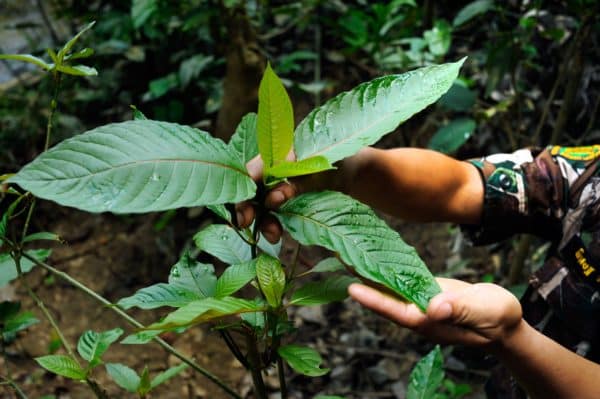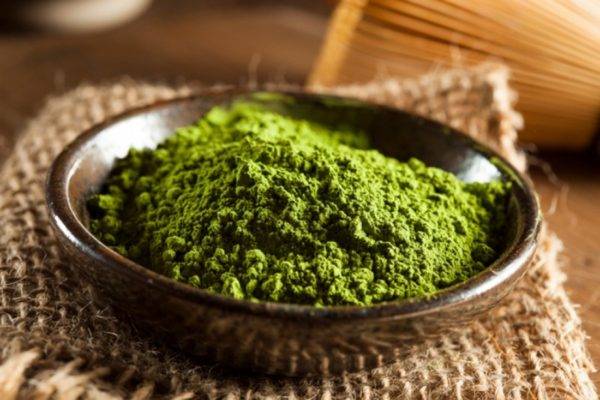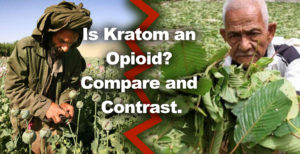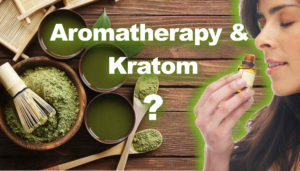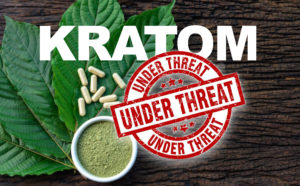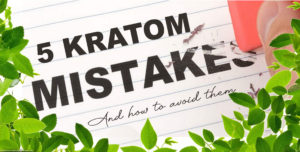Great news for kratom lovers! From the hallowed halls of mainstream, orthodox SCIENCE!
Another university research team developed a questionnaire on kratom at Johns Hopkins University School of Medicine. The survey, based on anecdotal evidence and not clinical studies, has proven that it works in ways you already understand quite well, as a person who takes kratom.
This survey was designed to examine how kratom users feel about the substance. It consists of the responses of over 2,700 respondents who take kratom. In this survey pool, 61% of them were female, and the median age was 40. 84% of all respondents had some form of a college education.
Their purpose of the study was to evaluate the effectiveness of kratom. It also looked at kratom’s potential to be less harmful than opioid use.
While the results of this kratom study were purely anecdotal, considering the fact the lack of scientific research on the herb, it is still a highly beneficial scientific insight into Mitragyna speciosa.

Johns Hopkins Kratom User Survey:
- 91% of respondents found kratom effective in relieving their pain
- 67% of all respondents found kratom to work well in reducing or eliminating anxiety
- 65% found that kratom was great at combating depression and bad moods
- 41% of respondents were taking kratom to overcome the bad symptoms of opioid withdrawal
- 87% of those taking kratom to combat their opioid dependence found it worked well
- 35% of respondents who took kratom to stop their opioid addiction reported being off prescription opioids (e.g. Oxycontin) or street dope (e.g., heroin) for over 12 months.
In addition to the wonderful, positive benefits of Mitragyna speciosa, this Johns Hopkins study also looked at kratom’s possible undesirable side effects. Study participants filled out a Substance Use Disorder checklist as part of the survey. The results found the following:
- Less than 3% of all respondents had moderate to severe kratom use disorder,
- Less than 10% met the criteria for mild kratom use disorder,
- Only a tiny 5% of respondents experienced kratom withdrawal,
- Only a minuscule 1.9% of responded experienced such pronounced side effects as irritability, anxiety, insomnia, or depression.
- And just 19% experienced mild kratom side effects.

In comparison, a whopping 80% of users of opioid medication experience at least one side effect. These unappealing side effects of heroin, Oxycontin, Fentanyl, Morphine, etc. include dry mouth, constipation, sweating, weight gain, sleep problems, drowsiness, memory issues, appetite loss, sexual dysfunction, nausea, fatigue, dry skin, and dizziness.
Albert Garcia-Romeu, PhD. commented that the findings of this study do not warrant kratom being categorized as a Schedule I drug. According to him, kratom doesn’t belong in the category.
Moreover, he added that kratom has very low abuse potential and should be explored for medical application as a means of managing pain as well as opioid use disorders.
He also noted that there is a lot of fearmongering due to the opioid-like effects of kratom and the growing concerns and issues caused by the opioid epidemic.
Albert Garcia-Romeu PhD. instructs psychiatry and behavioral sciences at the Johns Hopkins University School of Medicine and he is the one who lead the team performing this kratom survey.
He compared the statistics for opioid deaths – and deaths ALLEGEDLY (mistakenly) attributed to kratom. He said that in 2017 alone, there were over 47,000 opioid overdose deaths in the USA, while, in a relatively similar time period, the CDC attributed nearly 100 deaths to kratom.
But the vast majority of the so-called “kratom deaths” were persons who also had the presence of other substances (like alcohol, cocaine, heroin, Xanax, etc.), and others had preexisting health conditions, so it was not just kratom involved.
Garcia-Romeu also remarked about most of the deaths involving kratom use are due to the lack of regulations and standards in the kratom industry. These can result in kratom contamination with dangerous substances or inordinate, excessive amounts being used as a kratom dosage.
Thus, our beloved herb in the coffee family, the mighty kratom, comes out smelling like a rose!
No herbal, natural, or synthesized substance is perfect, and nothing is ideal for everyone. But if you have not yet tried kratom, you should do so, with very few misgivings.
SIDE NOTE (quote from the survey report):
“The American Kratom Association (AKA), a consumer advocacy group, estimates that 10-16 million people in the U.S. regularly use kratom by either eating its ground leaves in food or brewing them in tea.
Kratom is a tropical plant related to coffee trees, and grown mainly in Southeast Asia.
It contains a chemical called mitragynine, an alkaloid that acts on the brain opiate receptors and alters mood.
In Asia, where use has long been widespread, people use it in small doses as an energy and mood booster, similar to coffee use in the West. They use larger amounts for pain, or recreationally like beer and wine.”
As more kratom surveys and research studies are conducted, stay tuned! We’ll try to report on them, so you can rest assured that kratom is indeed as terrific and beneficial as Southeast Asia tradition has long proclaimed!


